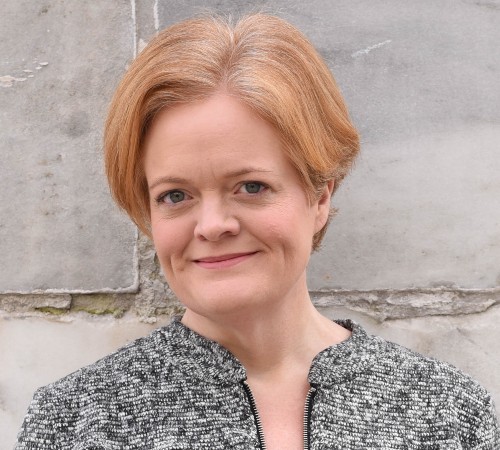With an emphasis on mobility and innovation, mobile health clinics are helping to tackle care gaps, reach underserved populations, and give hospitals a new access point.
Editor's note: This article appears in the September/October 2022 edition of HealthLeaders magazine.
Healthcare organizations are realizing that some services need to be brought to the consumer, rather than waiting for that person to visit a doctor. And they're using mobile health clinics to make that connection.
Mobile health clinics come in many shapes and sizes, from fully equipped, customized RVs or trailers offering a range of primary and specialty care services, to small vans with the supplies and resources needed to address one particular goal, such as sexual health education, mammography screenings, or vaccinations. They're designed to go into communities that lack brick-and-mortar healthcare resources or have populations that won't or can't access healthcare services.
"They are becoming more prevalent, in part because of the pandemic," says Mollie Williams, DrPH, MPH, a lecturer on global health and social medicine at Harvard Medical School and executive director of The Family Van and the Mobile Health Map, a resource for mobile health clinics with more than 700 members.

Mollie Williams, DrPH, MPH, executive director of The Family Van and the Mobile Health Map and a lecturer on global health and social medicine at Harvard Medical School. Photo courtesy of Harvard Medical School.
"One of the benefits of mobile health clinics is their adaptability," adds Elizabeth Wallace, executive director of the Mobile Healthcare Association (MHA), the leading membership organization for mobile health professionals in the US and Canada. "They're designed to turn the traditional healthcare relationship on its head … and create a new model of care."
Williams and Wallace were part of a team that put together The Case for Mobile, a report recently released by the Mobile Health Map and the MHA that examines how mobile health clinics support the business objectives of health systems and impact community health and health equity initiatives.
A surge in popularity as healthcare goes mobile
Williams estimates a few hundred mobile health clinics were in operation prior to the pandemic, and that number has increased to about 2,000 as healthcare organizations look at new ways to deliver care that meets consumers where they are. In addition, they're as popular in urban areas, such as inner cities, as in rural regions.
"The pandemic has sparked innovation in healthcare, including greater interest in mobile programs," the Case for Mobile report states. "Healthcare providers have adopted or scaled up other innovations, including telemedicine, drive-through testing and vaccination sites, and 'pop-up' clinics. It is very likely that innovations sparked by the pandemic will continue in various forms long after the crisis has ended. For example, many mobile clinics that began as a way to expand access to COVID testing or vaccinations are planning to continue operating and adjusting their service offerings to meet other community needs."
[See also: Upstate NY Health System Finds Strong Demand for Mobile Healthcare.]
"Because of the pandemic, everyone had to think creatively," says Williams. "Now [healthcare executives] are thinking about new ways to use mobile clinics. Some are using them to expand business lines, while others want to expand capacity or reach new communities."
And while some have classified mobile health clinics as "alternatives" to healthcare models, a 2017 study published in the National Library of Medicine and authored by researchers at Harvard Medical School indicates these vehicles can also serve as entry points to a health system, helping consumers navigate the complexities of healthcare access, and paving the way for future in-person and virtual connections.
"In many contexts, [mobile health clinics] can and do play an integral part in a healthcare system, providing accessible and sustainable care with quality that matches traditional healthcare settings," that study concluded.
These mobile access points "can identify pressures that a hospital is facing and address them in a different way," Wallace says. They can be located next to a retail center, like a mall or supermarket, or alongside a library or town offices, even next to a theater, park, beach, or motel, attracting people who might need care but are wary of going to a crowded ER or urgent care clinic.
Finding the right use case for a mobile health clinic
Williams says a common misperception about mobile health clinics is that they have to be expensive or filled with the latest in digital health technology. A health system can spend as little as $150,000 or $200,000 in startup costs for a mobile health program and see success, as long as the program reaches and engages its target population with services that meet a gap in care.
"Those costs don't have to be substantial compared to what you're probably spending" to address the care needs of that population, she says.
And they can be flexible. If one approach or one location isn't working, pull up stakes and move, or redesign the mobile clinic to address a different healthcare concern.
Wallace says healthcare organizations looking to launch a mobile health program should first conduct a community needs assessment. This gives the organization an opportunity to talk to the community about what it wants and needs, as well as identifying partners in the project. That may include health systems and local doctors, charitable groups, civic organizations, and even local government. The idea is to create a group of stakeholders who can help guide the program as it launches and evolves and identify any issues it may have to address.

Elizabeth Wallace, executive director of the Mobile Healthcare Association. Photo courtesy of the MHA.
"It shouldn't be thought of as a pilot project," she adds. That evokes images of a test, or something that's being tried out and can be cancelled at any moment. This, instead, is a program that aims to stay in the community and foster a lasting relationship.
In addition, mobile health clinics don’t have to be dependent on technology to be effective.
"Technology and mobile healthcare, they're not in the same universe," Williams says. "I would say they can complement each other and stimulate each other … but they don’t have to both be there."
"We've found, in some cases, that technology doesn't resonate with them," she says of the typical mobile health clinic visitor. "They don't seek out [healthcare services] like you or I. They are coming to a mobile clinic, in many cases, for that personal touch."
This, in turn, can help a health system connect with its surrounding communities. That point was made by a health clinic operator interviewed for the MHA/Mobile Health Map report.
"For communities that have been disinvested or marginalized by our healthcare system through generations, being able to go to them, make the effort to get right where they are-say here I am," the clinic operator said. "I’m here to respond to you. It’s a good way to be able to bring them into a healthcare system that maybe they are distrustful of."
Sowing the seeds for sustainability
The challenge for many mobile health programs lies in finding a means of continuing past the loan, grant, or award used to get the program up and running.
"The launch is just the beginning," says Williams. "You need to establish a plan for getting support, especially from payers."
The key, as with any new healthcare program, is to gather evidence that the program works. That may be in reduced ER visits, which help a hospital's bottom line and lessens the pressure on 911, ambulance and EMS services, or an improvement in screenings, public health education, chronic care management, and other services that boost clinical outcomes down the line. The unmeasured effect, meanwhile, lies in an improved community.
The drawbacks? It's hard to find any.
"We worked really hard to find people who would disagree with us," Williams chuckles. "We tried really hard to find people to tell us that mobile clinics were a bad idea, and that just didn't play out."
“We worked really hard to find people who would disagree with us. We tried really hard to find people to tell us that mobile clinics were a bad idea, and that just didn't play out.”
Mollie Williams, DrPH, MPH, executive director of The Vamily Van and the Mobile Health Map and a lecturer on global health and social medicine at Harvard Medical School.
Eric Wicklund is the associate content manager and senior editor for Innovation at HealthLeaders.
KEY TAKEAWAYS
Roughly 2,000 mobile health clinics are now operating in the US, in form factors ranging from fully equipped RVs to simple vans.
Healthcare organizations are embracing these vehicles as a new business line into rural and underserved communities, as well as an entry point to help people navigate the complex healthcare system.
Technology isn't necessarily a key to success; in some cases mobile health clinics are popular because they give people a simple connection to in-person care.
